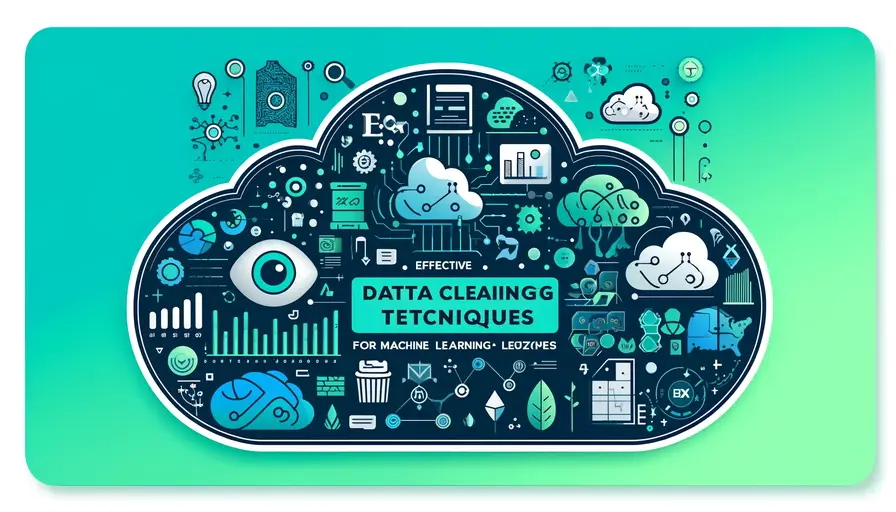
Essential Skills for a Successful Career in Machine Learning

Understanding Mathematics and Statistics
A strong understanding of mathematics and statistics is fundamental for anyone pursuing a career in machine learning. Mathematics forms the backbone of machine learning algorithms, providing the theoretical framework necessary to develop and optimize these models. Key areas include linear algebra, calculus, probability, and statistics.
Linear algebra is essential for understanding how algorithms process data, particularly in areas like data transformation and dimensionality reduction. Concepts such as matrices and vectors are crucial for operations in machine learning algorithms. Similarly, calculus is used to understand the optimization of algorithms, particularly in gradient descent and backpropagation in neural networks.
Probability and statistics are indispensable for understanding and managing the uncertainty inherent in real-world data. Statistical methods help in making inferences about data, building predictive models, and validating the performance of machine learning algorithms. For instance, understanding distributions, hypothesis testing, and statistical significance is crucial for model evaluation.
Key Mathematical Concepts
To succeed in machine learning, one must be proficient in several key mathematical concepts. These include understanding matrix operations, eigenvalues, and eigenvectors, which are critical in algorithms like Principal Component Analysis (PCA) and Singular Value Decomposition (SVD). Mastery of these concepts enables the effective transformation and analysis of high-dimensional data.
 Is Python the Primary Programming Language for Machine Learning?
Is Python the Primary Programming Language for Machine Learning?Here's an example of performing PCA in Python using scikit-learn:
from sklearn.decomposition import PCA
import numpy as np
# Assuming data is a numpy array with shape (n_samples, n_features)
pca = PCA(n_components=2)
principal_components = pca.fit_transform(data)
print(principal_components)Importance of Probability and Statistics
Probability theory helps in understanding the likelihood of different outcomes and managing uncertainty. It underpins various machine learning algorithms, such as Bayesian networks and Hidden Markov Models. Statistics provide tools for data analysis, model evaluation, and hypothesis testing, which are essential for validating model performance and ensuring robustness.
For instance, understanding Bayes' theorem is crucial for implementing and interpreting algorithms like Naive Bayes classifiers. Similarly, statistical tests like chi-square and t-tests help in feature selection and model validation.
Real-World Applications
Mathematics and statistics are applied in various real-world machine learning tasks. For example, in natural language processing, linear algebra techniques are used for word embeddings, while statistical methods are employed for language modeling. In computer vision, calculus is used for optimizing convolutional neural networks (CNNs), and probability theory helps in object detection algorithms.
 Predicting Categorical Variables with Linear Regression
Predicting Categorical Variables with Linear RegressionOverall, a solid foundation in mathematics and statistics is indispensable for developing, understanding, and optimizing machine learning models.
Proficiency in Programming Languages
Proficiency in programming languages such as Python, R, and Java is necessary to implement machine learning algorithms effectively. These languages provide the tools and libraries required to develop, test, and deploy machine learning models efficiently.
Python is the most popular language for machine learning due to its simplicity and the vast ecosystem of libraries such as TensorFlow, Keras, and scikit-learn. These libraries offer pre-built functions and frameworks that simplify the implementation of complex algorithms, making Python a versatile choice for machine learning projects.
Python for Machine Learning
Python is widely used in the machine learning community for its readability, extensive libraries, and strong community support. Libraries like TensorFlow and Keras provide powerful tools for building and training neural networks. Scikit-learn offers simple and efficient tools for data mining and data analysis, making it accessible for both beginners and experts.
 Major Players in Machine Learning Group Data Providers
Major Players in Machine Learning Group Data ProvidersHere's an example of training a simple neural network in Python using Keras:
import tensorflow as tf
from tensorflow.keras.models import Sequential
from tensorflow.keras.layers import Dense
# Define a simple neural network
model = Sequential([
Dense(64, activation='relu', input_shape=(784,)),
Dense(64, activation='relu'),
Dense(10, activation='softmax')
])
# Compile the model
model.compile(optimizer='adam', loss='sparse_categorical_crossentropy', metrics=['accuracy'])
# Assuming X_train and y_train are predefined
model.fit(X_train, y_train, epochs=10, batch_size=32)R and Java in Machine Learning
R is another important language, especially for statistical analysis and visualization. It offers numerous packages for data analysis, such as caret and randomForest, which facilitate the development of machine learning models. R's visualization capabilities, through libraries like ggplot2, are highly regarded for exploratory data analysis and presentation of results.
Java is also significant, particularly in enterprise environments where machine learning models need to be integrated with existing infrastructure. Libraries like Weka and Deeplearning4j provide tools for implementing machine learning algorithms in Java, making it suitable for large-scale applications and deployment.
Choosing the Right Language
Choosing the right programming language depends on the specific requirements of the project. Python is generally preferred for its versatility and ease of use, especially for prototyping and research. R is favored for statistical analysis and visualization, while Java is often chosen for production environments and large-scale applications.
 The Top Machine Learning Resources on Fresco Play for Learning R
The Top Machine Learning Resources on Fresco Play for Learning RBy mastering these languages, machine learning practitioners can leverage the best tools available for different stages of the machine learning workflow, from data preprocessing to model deployment.
Data Preprocessing and Cleaning
Knowledge of data preprocessing and data cleaning techniques is crucial for ensuring accurate results in machine learning models. Data preprocessing involves transforming raw data into a suitable format for analysis, while data cleaning addresses inconsistencies and errors in the dataset.
Effective data preprocessing can significantly improve the performance of machine learning models. It includes steps such as normalization, handling missing values, and feature extraction. These techniques help in creating a robust dataset that enhances model accuracy and reduces overfitting.
Importance of Data Cleaning
Data cleaning is a critical step in the machine learning pipeline. It involves identifying and correcting errors, such as missing values, outliers, and duplicate records, which can negatively impact model performance. Cleaning the data ensures that the dataset is accurate and reliable, providing a solid foundation for building predictive models.
 Is Learning Machine Learning Worth It for Beginners?
Is Learning Machine Learning Worth It for Beginners?Here's an example of handling missing values and normalizing data in Python using pandas and scikit-learn:
import pandas as pd
from sklearn.impute import SimpleImputer
from sklearn.preprocessing import StandardScaler
# Load dataset
data = pd.read_csv('data.csv')
# Handle missing values
imputer = SimpleImputer(strategy='mean')
data_imputed = imputer.fit_transform(data)
# Normalize data
scaler = StandardScaler()
data_normalized = scaler.fit_transform(data_imputed)Techniques for Data Preprocessing
Data preprocessing techniques include normalization, standardization, and feature engineering. Normalization scales the data to a specific range, typically [0, 1], which helps in improving the performance of algorithms that are sensitive to the scale of the input data. Standardization transforms data to have a mean of zero and a standard deviation of one, which is essential for algorithms that assume normally distributed data.
Feature engineering involves creating new features from existing ones to improve model performance. This can include techniques such as polynomial features, interaction terms, and domain-specific transformations. Feature selection methods, such as correlation analysis and recursive feature elimination, help in identifying the most relevant features for the model.
Impact on Model Performance
Proper data preprocessing and cleaning have a significant impact on model performance. Clean and well-preprocessed data lead to more accurate and reliable models, reducing the risk of overfitting and improving generalization to new data. Investing time in these steps ensures that the machine learning models are built on a solid foundation, leading to better outcomes.
 Strategies to Safeguard Machine Learning Models from Theft
Strategies to Safeguard Machine Learning Models from TheftFamiliarity with ML Libraries
Familiarity with machine learning libraries and frameworks such as TensorFlow, scikit-learn, and PyTorch is essential for building and training models. These tools provide the necessary functions and utilities to develop, test, and deploy machine learning algorithms efficiently.
TensorFlow and Keras
TensorFlow is a powerful open-source library developed by Google for building and training machine learning models. It supports a wide range of tasks, including deep learning and neural networks. Keras is a high-level API built on top of TensorFlow that simplifies the process of creating and training neural networks.
Here's an example of using TensorFlow and Keras to build a convolutional neural network (CNN):
import tensorflow as tf
from tensorflow.keras.models import Sequential
from tensorflow.keras.layers import Conv2D, MaxPooling2D, Flatten, Dense
# Define a CNN model
model = Sequential([
Conv2D(32, kernel_size=(3, 3), activation='relu', input_shape=(28, 28, 1)),
MaxPooling2D(pool_size=(2, 2)),
Flatten(),
Dense(128, activation='relu'),
Dense(10, activation='softmax')
])
# Compile the model
model.compile(optimizer='adam', loss='sparse_categorical_crossentropy', metrics=['accuracy'])
# Assuming X_train and y_train are predefined
model.fit(X_train, y_train, epochs=10, batch_size=32)scikit-learn for Traditional ML
scikit-learn is a widely used library in Python for traditional machine learning tasks. It provides simple and efficient tools for data mining and data analysis, including various algorithms for classification, regression, clustering, and dimensionality reduction.
Here's an example of using scikit-learn to train a logistic regression model:
from sklearn.linear_model import LogisticRegression
from sklearn.model_selection import train_test_split
# Load dataset
X_train, X_test, y_train, y_test = train_test_split(X, y, test_size=0.2, random_state=42)
# Train a logistic regression model
model = LogisticRegression()
model.fit(X_train, y_train)
# Predict on the test set
predictions = model.predict(X_test)PyTorch for Flexibility
PyTorch is another popular machine learning framework, known for its flexibility and ease of use. Developed by Facebook, PyTorch is widely used for deep learning research and applications. It provides dynamic computation graphs, making it easier to modify and debug models during development.
Here's an example of using PyTorch to build a simple neural network:
import torch
import torch.nn as nn
import torch.optim as optim
# Define a simple neural network
class SimpleNN(nn.Module):
def __init__(self):
super(SimpleNN, self).__init__()
self.fc1 = nn.Linear(28*28, 128)
self.fc2 = nn.Linear(128, 10)
def forward(self, x):
x = torch.relu(self.fc1(x))
x = self.fc2(x)
return x
# Create an instance of the network
model = SimpleNN()
# Define loss function and optimizer
criterion = nn.CrossEntropyLoss()
optimizer = optim.Adam(model.parameters(), lr=0.001)
# Assuming X_train and y_train are predefined
# Training loop
for epoch in range(10):
outputs = model(X_train)
loss = criterion(outputs, y_train)
optimizer.zero_grad()
loss.backward()
optimizer.step()Big Data and Distributed Computing
The ability to work with big data and distributed computing tools like Hadoop and Spark is valuable for handling large datasets in machine learning projects. These tools enable the processing and analysis of massive datasets that cannot be handled by traditional data processing techniques.
Hadoop for Big Data
Hadoop is an open-source framework that allows for the distributed processing of large datasets across clusters of computers. It uses a simple programming model called MapReduce, which enables the parallel processing of data. Hadoop's ecosystem includes tools like HDFS (Hadoop Distributed File System) for storage and YARN (Yet Another Resource Negotiator) for resource management.
Spark for Speed
Apache Spark is a powerful, open-source processing engine built around speed, ease of use, and sophisticated analytics. Spark's in-memory computation capabilities make it much faster than traditional disk-based processing engines like Hadoop. Spark supports various high-level APIs in Java, Scala, Python, and R, making it accessible to a wide range of users.
Here's an example of using PySpark (the Python API for Spark) for data processing:
from pyspark.sql import SparkSession
# Initialize a Spark session
spark = SparkSession.builder.appName("MachineLearningExample").getOrCreate()
# Load dataset
df = spark.read.csv("data.csv", header=True, inferSchema=True)
# Perform a simple transformation
df_transformed = df.select("column1", "column2").filter(df["column3"] > 50)
# Show the result
df_transformed.show()Integration with Machine Learning
Big data tools can be integrated with machine learning frameworks to handle large-scale machine learning tasks. For example, Spark MLlib provides scalable machine learning algorithms that can be used directly on large datasets processed with Spark. This integration enables the development of machine learning models that can handle vast amounts of data efficiently.
By mastering big data tools and distributed computing techniques, machine learning practitioners can leverage the power of parallel processing to tackle large-scale data challenges and build more robust models.
Problem-Solving and Critical Thinking
Strong problem-solving and critical-thinking skills are necessary to identify and address complex machine learning challenges. These skills enable practitioners to approach problems methodically, break them down into manageable parts, and devise effective solutions.
Analytical Thinking
Analytical thinking involves examining data and problems from different angles to understand the underlying patterns and relationships. This skill is crucial for identifying the root cause of issues and developing strategies to address them. Analytical thinking helps in interpreting model results, understanding feature importance, and improving model performance.
Creative Problem-Solving
Creative problem-solving is essential for developing innovative solutions to complex problems. Machine learning often involves working with imperfect data and ambiguous requirements, requiring creative approaches to overcome these challenges. Practitioners must think outside the box to design effective models, optimize algorithms, and address data quality issues.
Decision-Making Skills
Decision-making skills are vital for selecting the appropriate algorithms, tuning hyperparameters, and choosing evaluation metrics. These decisions have a significant impact on the performance and reliability of machine learning models. Practitioners must weigh the pros and cons of different approaches and make informed decisions based on their analysis.
By honing their problem-solving and critical-thinking skills, machine learning professionals can effectively tackle complex challenges, improve model performance, and drive successful project outcomes.
Communication Skills
Effective communication skills are important for presenting findings and collaborating with stakeholders in machine learning projects. Clear communication ensures that the results and implications of machine learning models are understood by both technical and non-technical audiences.
Technical Communication
Technical communication involves explaining complex machine learning concepts and methodologies to other data scientists, engineers, and technical stakeholders. This includes writing detailed documentation, creating technical reports, and presenting findings at conferences or meetings.
Non-Technical Communication
Non-technical communication is essential for conveying the value and impact of machine learning models to business stakeholders, including managers, clients, and other non-technical team members. This involves translating technical results into actionable insights and making recommendations that align with business objectives.
Data Visualization
Data visualization plays a crucial role in communication by presenting data and model results in a visually appealing and understandable format. Tools like Tableau, Power BI, and R's ggplot2 enable the creation of interactive and informative visualizations that help stakeholders grasp complex information quickly.
Here's an example of creating a simple visualization in R using ggplot2:
# Load necessary library
library(ggplot2)
# Create a scatter plot
ggplot(data = iris, aes(x = Sepal.Length, y = Sepal.Width, color = Species)) +
geom_point() +
labs(title = "Sepal Length vs. Sepal Width by Species")By developing strong communication skills, machine learning practitioners can effectively share their findings, foster collaboration, and ensure that their work has a meaningful impact.
Continuous Learning
Continuous learning and staying updated with the latest advancements in machine learning is crucial to stay competitive in the field. The rapidly evolving nature of machine learning requires practitioners to constantly update their knowledge and skills to keep pace with new technologies, methodologies, and best practices.
Importance of Lifelong Learning
Lifelong learning is essential for maintaining proficiency in machine learning. This includes staying current with the latest research papers, attending conferences and workshops, and participating in online courses and certifications. Engaging with the machine learning community through forums, blogs, and social media also helps in staying informed about new developments.
Keeping Up with Research
Keeping up with research involves regularly reading scientific papers published in top conferences and journals like NeurIPS, ICML, and JMLR. This helps practitioners stay abreast of cutting-edge techniques and innovations in the field. Implementing and experimenting with new methods based on these papers can enhance one's understanding and skills.
Participating in Competitions
Participating in competitions such as those hosted on Kaggle provides practical experience and exposure to real-world problems. Competitions encourage experimentation with different approaches and foster learning from other participants' solutions. This hands-on experience is invaluable for refining skills and gaining insights into effective machine learning practices.
By committing to continuous learning, machine learning professionals can keep their skills sharp, adapt to new challenges, and remain at the forefront of the field.
Domain Knowledge
Understanding of domain knowledge and specific industry applications is beneficial for developing contextually relevant machine learning models. Domain expertise enables practitioners to better interpret data, identify important features, and design models that address specific business problems.
Importance of Domain Knowledge
Domain knowledge helps in understanding the nuances of the data and the context in which it is generated. This understanding is crucial for feature engineering, as it allows practitioners to create meaningful features that improve model performance. Domain expertise also aids in validating model results and ensuring that they make sense in the given context.
Industry Applications
Industry applications of machine learning vary widely, from healthcare and finance to retail and manufacturing. Each industry has its unique challenges and requirements, which necessitate tailored approaches to machine learning. For example, healthcare applications may focus on predictive modeling for patient outcomes, while finance may prioritize fraud detection and risk assessment.
Collaboration with Domain Experts
Collaboration with domain experts is essential for gaining insights into specific applications and ensuring that machine learning models are relevant and effective. Domain experts provide valuable knowledge about the data, its limitations, and the practical implications of model results. Working closely with these experts helps in aligning machine learning efforts with business goals.
By leveraging domain knowledge and collaborating with industry experts, machine learning practitioners can develop more accurate and impactful models that drive meaningful business outcomes.
Ethical Considerations
Ethical considerations and a strong understanding of privacy and security issues are important for responsible and ethical machine learning practices. As machine learning models are increasingly used in sensitive applications, it is crucial to ensure that they are developed and deployed in a manner that respects individuals' rights and privacy.
Importance of Ethics
Ethical considerations involve ensuring fairness, transparency, and accountability in machine learning models. Practitioners must be aware of potential biases in data and models and take steps to mitigate them. Transparency in how models make decisions is essential for building trust and ensuring that the models' outcomes are understandable and justifiable.
Privacy and Security
Privacy and security are critical when dealing with sensitive data, such as personal information in healthcare or financial transactions. Machine learning practitioners must implement robust security measures to protect data from unauthorized access and ensure compliance with regulations like GDPR and HIPAA. Techniques like differential privacy and secure multiparty computation can help in safeguarding data privacy.
Responsible AI
Responsible AI practices involve designing and deploying machine learning models that align with ethical principles and societal values. This includes considering the broader impact of models on individuals and communities and ensuring that they do not perpetuate harmful biases or unfair practices. Engaging with diverse stakeholders and incorporating ethical considerations into the development process is crucial for achieving responsible AI.
By prioritizing ethical considerations and maintaining a strong focus on privacy and security, machine learning practitioners can contribute to the development of trustworthy and socially responsible AI systems.
A successful career in machine learning requires a combination of technical skills, domain knowledge, and ethical considerations. Proficiency in mathematics, programming languages, and data preprocessing is essential for developing robust models. Familiarity with machine learning libraries, big data tools, and continuous learning ensures that practitioners stay competitive and up-to-date with the latest advancements. Strong problem-solving, communication skills, and ethical awareness are crucial for addressing complex challenges and ensuring responsible AI practices. By honing these skills, machine learning professionals can drive impactful and innovative solutions in their field.
If you want to read more articles similar to Essential Skills for a Successful Career in Machine Learning, you can visit the Education category.






You Must Read